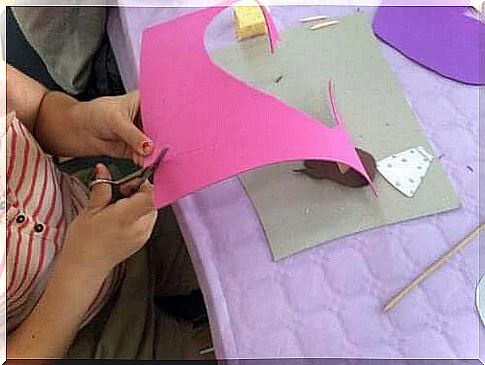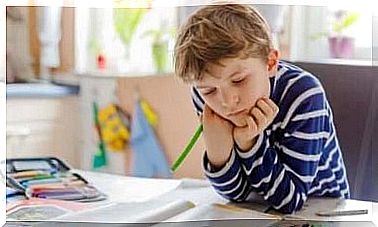Exercises To Promote Children’s Speech

Although very young children do not know how to talk, they can express themselves through crying and body language. However, it is vital that they develop their verbal skills. One way to do this is to perform some exercises to promote children’s speech.
The value of language
The ability to speak allows children to express and internalize what they think and want. In fact, spoken language is so important that it is considered the primary means of communication.
Language is also a fundamental means of socialization, allowing children to adapt and better integrate into their environment. Through speech, the child learns cultural habits from his family and can later form relationships.
So what can you do to promote children’s speech? Some of the exercises are very simple. You can even do them in your own home and with activities you may have already incorporated into their routine.

How do you promote children’s speech?
Parents have a huge influence on the process of their children’s speech development. That is why it is important to pronounce all words correctly and to articulate them carefully.
It’s a good idea to maintain a constant dialogue to encourage your child to speak. It should be systematic and adapted to their age, abilities and interests. Even if you’re tempted to use diminutives or childish language, avoid it as much as possible.
Don’t try to anticipate what they are going to say or finish their sentences. Formulate open questions so that the child can express himself and expand his message. Based on these basic guidelines, let’s show you some exercises that you can use to improve children’s speech.
1. Take the child for a walk
Walks and other outings are fun experiences that allow your child to gain new sensations and especially vocabulary. The emotions they feel will also motivate them to express themselves more freely and share their feelings.
Discuss what they see, including the colors, sounds, smells, and shapes. Take advantage of everything around them to have conversations with a logical and interesting flow.

2. Read with the child
This exercise will help them develop the ability to understand things and people. You can start with the question “Where is the…” and have your child point or touch the object or color you specified. Give them some time to process your request. If they succeed, reward them for their efforts and do the exercise again.
3. Crafts
This is similar to the previous activity, but uses photos and divn. You can start describing any image or photo using certain words and characters. They learn to understand the different actions and contrasts between the images.
Once you have explained each image, ask your child to identify what the people in it are doing. Remember that the pictures should represent simple and familiar activities for the child, such as eating, playing, sleeping or running.

4. Teach them to say their name
In addition to the importance of knowing their names, this activity will help your child develop the ability to name other people, objects, and activities. Start by saying, “Your name is…” and repeat it a few times so they can respond immediately if you ask the same question again later.
Be sure to reward them when they answer correctly and include their middle name or last name so they learn it in stages. If they don’t answer correctly, repeat the process from the beginning.
You can use the same exercise with body parts or other familiar objects, such as toys and utensils that are commonly used (their plate, shoes, that sort of thing).

5. Animal Sounds
Another activity that kids love is linking animals to the sounds they make. You can find apps or games for it or you can just do it with your voice, imitating a cat’s meowing or a cow’s mooing.
One way to perform this exercise is to imitate the sound of an animal and ask your child what it is. Or you can ask them what kind of sound a duck or dog makes and see if they give the correct answer.
Conclusions
You’ve probably done some of these exercises to help your child’s speech. The best practice of all is to constantly talk to the child and let him express himself freely and without pressure. Always enjoy the process.
Remember that you are the first person to teach your child to speak. Spend time and energy helping them enrich their vocabulary. Which exercises have worked best for your children?









